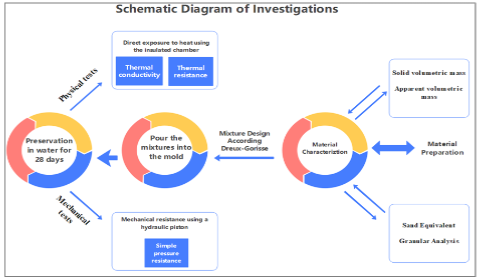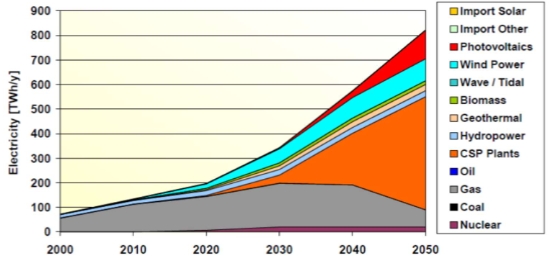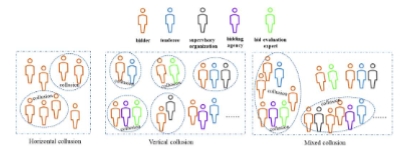Architecting sustainability performances and enablers for grid-interactive efficient buildings
Abstract
Today, grid-interactive, efficient buildings are gaining popularity due to their potential sustainability performances through their ability to learn, adapt, and evolve at different scales to improve the quality of life of their users while optimizing resource usage and service availability. This is realized through various practices such as management and control measures enabled by smart grid technologies, interoperability, and human-cyber-physical security. However, despite their great potential, the research of those technologies still faces various challenges. These include a lack of communication and control infrastructure to address interpretability, security, cost barriers, and difficulties balancing occupant needs with grid benefits. Initially, system modelling and simulation are promising approaches to address those challenges ahead of time. It involves consideration of complex systems made up of components from various research domains. This paper addresses the above practices, highlighting the value of integrating technology and intelligence in the planning and operation of buildings, both new and old. It provides a way to educate architects and engineers about this emerging field and demonstrates how these practices can help in creating efficient, resilient, and secure buildings that contribute to occupant comfort and decarbonization.
References
[1]NIST. Commissioning building systems for improved energy performance. Available online: https://www.nist.gov/programs-projects/commissioning-building-systems-improved-energy-performance (accessed on 20 May 2024).
[2]Aguilar J, Garces-Jimenez A, R-Moreno MD, et al. A systematic literature review on the use of artificial intelligence in energy self-management in smart buildings. Renewable and Sustainable Energy Reviews. 2021; 151: 111530. doi: 10.1016/j.rser.2021.111530
[3]Neukomm M, Nubbe V, Fares R. Grid-interactive efficient buildings. Available online: https://www1.eere.energy.gov/buildings/pdfs/75470.pdf (accessed on 20 May 2024).
[4]Habash R. Sustainability and Health of Intelligent Buildings, 1st ed. Woodhead Publishing; 2022.
[5]Peterson K, Torcellini P, Grant R, et al. A common definition for zero energy buildings. Available online: https://www.energy.gov/sites/prod/files/2015/09/f26/bto_common_definition_zero_energy_buildings_093015.pdf (accessed on 20 May 2024).
[6]ASHRAE. ASHRAE releases guide on the role of grid interactivity in decarbonization. Available online: https://www.ashrae.org/about/news/2023/ashrae-releases-guide-on-the-role-of-grid-interactivity-in-decarbonization (accessed on 20 May 2024).
[7]Hussain I, Ullah M, Ullah I, et al. Optimizing energy consumption in the home energy management system via a bio-inspired dragonfly algorithm and the genetic algorithm. Electronics. 2020; 9(3): 406. doi: 10.3390/electronics9030406
[8]Kolokotsa D. The role of smart grids in the building sector. Energy and Buildings. 2016; 116: 703-708. doi: 10.1016/j.enbuild.2015.12.033
[9]Rahman S, Haque A, Jing Z. Modeling and performance evaluation of grid-interactive efficient buildings (GEB) in a microgrid environment. IEEE Open Access Journal of Power and Energy. 2021; 8: 423-432. doi: 10.1109/oajpe.2021.3098660
[10]Chang S, Yang PPJ, Yamagata Y, Tobey MB. Modeling and design of smart buildings. In: Yamagata Y, Yang PPJ (editors). Urban Systems Design: Creating Sustainable Smart Cities in the Internet of Things Era. Elsevier; 2020. pp. 59-86. doi: 10.1016/b978-0-12-816055-8.00003-8
[11]Chang S, Castro-Lacouture D, Matsui K, et al. Planning and monitoring of building energy demands under uncertainties by using IoT data. In: Proceedings of the ASCE International Conference on Computing in Civil Engineering 2019; 17-19 June 2019; Atlanta, Georgia, USA. doi: 10.1061/9780784482445.027
[12]Wang Z, Srinivasan RS. A review of artificial intelligence based building energy use prediction: Contrasting the capabilities of single and ensemble prediction models. Renewable and Sustainable Energy Reviews. 2017; 75: 796-808. doi: 10.1016/j.rser.2016.10.079
[13]Crawley DB, Lawrie LK, Winkelmann FC, et al. EnergyPlus: Creating a new-generation building energy simulation program. Energy Building. 2001; 33(4): 319-331.
[14]Qureshi FA, Lymperopoulos I, Khatir AA, et al. Economic advantages of office buildings providing ancillary services with intraday participation. IEEE Transactions on Smart Grid. 2018; 9(4): 3443-3452. doi: 10.1109/tsg.2016.2632239
[15]Huang S, Wu D. Validation on aggregate flexibility from residential air conditioning systems for building-to-grid integration. Energy and Buildings. 2019; 200: 58-67. doi: 10.1016/j.enbuild.2019.07.043
[16]Liu M, Heiselberg P. Energy flexibility of a nearly zero-energy building with weather predictive control on a convective building energy system and evaluated with different metrics. Applied Energy. 2019; 233-234: 764-775. doi: 10.1016/j.apenergy.2018.10.070
[17]Li X, Malkawi A. Multi-objective optimization for thermal mass model predictive control in small and medium size commercial buildings under summer weather conditions. Energy. 2016; 112: 1194-1206. doi: 10.1016/j.energy.2016.07.021
[18]Taha AF, Gatsis N, Dong B, et al. Buildings-to-grid integration framework. IEEE Transactions on Smart Grid. 2019; 10(2): 1237-1249. doi: 10.1109/tsg.2017.2761861
[19]Joe J, Karava P. A model predictive control strategy to optimize the performance of radiant floor heating and cooling systems in office buildings. Applied Energy. 2019; 245: 65-77. doi: 10.1016/j.apenergy.2019.03.209
[20]Jiang T, Ju P, Wang C, et al. Coordinated control of air-conditioning loads for systemfrequency regulation. IEEE Transactions on Smart Grid. 2021; 12(1): 548-560. doi: 10.1109/tsg.2020.3022010
[21]Mai W, Chung CY. Economic MPC of aggregating commercial buildings for providing flexible power reserve. IEEE Transactions on Power Systems. 2015; 30(5): 2685-2694. doi: 10.1109/tpwrs.2014.2365615
[22]Baranski M, Meyer L, Fütterer J, et al. Comparative study of neighbor communication approaches for distributed model predictive control in building energy systems. Energy. 2019; 182: 840-851. doi: 10.1016/j.energy.2019.06.037
[23]Chellaswamy C, Ganesh Babu R, Vanathi A. A framework for building energy management system with residence mounted photovoltaic. Building Simulation. 2021; 14(4): 1031-1046. doi: 10.1007/s12273-020-0735-x
[24]Becerik-Gerber B, Lucas G, Aryal A, et al. The field of human building interaction for convergent research and innovation for intelligent built environments. Scientific Reports. 2022; 12(1). doi: 10.1038/s41598-022-25047-y
[25]ANSI/ASHRAE. Thermal Environmental Conditions for Human Occupancy. American Society of Heating, Refrigerating and Air-Conditioning Engineers (ASHRAE 55:2020); 2020.
[26]ISO. Analytical Determination And Interpretation of Thermal Comfort Using Calculation of the PMV and PPD Indices and Local Thermal Comfort Criteria—Ergonomics of the Thermal Environment (ISO 7730:2005). International Organization for Standardization; 2005.
[27]CEN. Energy performance of buildings—Ventilation for buildings—Part 1: Indoor environmental input parameters for design and assessment of energy performance of buildings addressing indoor air quality, thermal environment, lighting and acoustics—Module Ml-6, European Committee for Standardization (EN 16798–1:2019). Available online: https://www.sis.se/en/produkter/construction-materials-and-building/installations-in-buildings/general/ss-en-16798-12019/ (accessed on 20 May 2024).
[28]CEN. Indoor environmental input parameters for design and assessment of energy performance of buildings addressing indoor air quality, thermal environment, lighting and acoustics (EN 15251:2007). Available online: https://standards.iteh.ai/catalog/standards/cen/92485123-bf64-40e3-9387-9724a642eae8/en-15251-2007 (accessed on 20 May 2024).
[29]Fanger PO. Thermal Comfort: Analysis and Applications in Environmental Engineering. Danish Technical Press; 1970.
[30]Segovia E, van Schaik P, Vukovic V. Indoor thermal comfort controller integrating human interaction in the control-loop as a live component. In: Nixon JD, Al-Habaibeh A, Vukovic V, et al. (editors). Energy and Sustainable Futures: Proceedings of the 3rd ICESF. Springer Nature Switzerland; 2023. pp. 107-115. doi: 10.1007/978-3-031-30960-1
[31]Volk R, Stengel J, Schultmann F. Building Information Modeling (BIM) for existing buildings—Literature review and future needs. Automation in Construction. 2014; 38: 109-127. doi: 10.1016/j.autcon.2013.10.023
[32]Bortolini R, Rodrigues R, Alavi H, et al. Digital twins’ applications for building energy efficiency: A Review. Energies. 2022; 15(19): 7002. doi: 10.3390/en15197002
[33]Hou H, Lai JHK, Wu H, et al. Digital twin application in heritage facilities management: Systematic literature review and future development directions. Engineering, Construction and Architectural Management. 2023. doi: 10.1108/ecam-06-2022-0596
[34]Thebault M, Gaillard L. Optimization of the integration of photovoltaic systems on buildings for self-consumption – Case study in France. City and Environment Interactions. 2021; 10: 100057. doi: 10.1016/j.cacint.2021.100057
[35]Fath K, Stengel J, Sprenger W, et al. A method for predicting the economic potential of (building-integrated) photovoltaics in urban areas based on hourly radiance simulations. Solar Energy. 2015; 116: 357-370. doi: 10.1016/j.solener.2015.03.023
[36]Redweik P, Catita C, Brito M. Solar energy potential on roofs and facades in an urban landscape. Solar Energy. 2013; 97: 332-341. doi: 10.1016/j.solener.2013.08.036
[37]Allouhi A, Saadani R, Kousksou T, et al. Grid-connected PV systems installed on institutional buildings: Technology comparison, energy analysis and economic performance. Energy and Buildings. 2016; 130: 188-201. doi: 10.1016/j.enbuild.2016.08.054
[38]Sahri Y, Tamalouzt S, Belaid SL, et al. Performance improvement of Hybrid System based DFIG-Wind/PV/Batteries connected to DC and AC grid by applying Intelligent Control. Energy Reports. 2023; 9: 2027-2043. doi: 10.1016/j.egyr.2023.01.021
[39]Khosravi N, Baghbanzadeh R, Oubelaid A, et al. A novel control approach to improve the stability of hybrid AC/DC microgrids. Applied Energy. 2023; 344: 121261. doi: 10.1016/j.apenergy.2023.121261
[40]Zhou J, Zhou Y, Wang B, et al. Human–cyber–physical systems (HCPSs) in the context of new-generation intelligent manufacturing. Engineering. 2019; 5(4): 624-636. doi: 10.1016/j.eng.2019.07.015
[41]Wang B, Zheng P, Yin Y, et al. Toward human-centric smart manufacturing: A human-cyber-physical systems (HCPS) perspective. Journal of Manufacturing Systems. 2022; 63: 471-490. doi: 10.1016/j.jmsy.2022.05.005
[42]Schoechle T. Re-inventing wires: the future of landlines and networks, 2018. Available online: https://electromagnetichealth.org/wp-content/uploads/2018/02/ReInventing-Wires-1-25-18.pdf (accessed on 20 May 2024).
[43]Wu H, Han H, Wang X, et al. Research on artificial intelligence enhancing Internet of Things security: A survey. IEEE Access. 2020; 8: 153826-153848. doi: 10.1109/access.2020.3018170
[44]O’Brien L. Cybersecurity for smart buildings, 2019. Available online: https://www.arcweb.com/blog/cybersecurity-smart-buildings (accessed on 20 May 2024).
[45]Hasan MM, Mouftah HT. Cyber‐physical vulnerabilities of wireless sensor networks in smart cities. In: Song H, Fink GA, Jeschke S (editors). Security and Privacy in Cyber‐Physical Systems: Foundations, Principles and Applications. John Wiley & Sons; 2017. pp. 263-280. doi: 10.1002/9781119226079.ch13
[46]Hasan MM, Mouftah HT. Cloud-centric collaborative security service placement for advanced metering infrastructures. IEEE Transactions on Smart Grid. 2019; 10(2): 1339-1348. doi: 10.1109/tsg.2017.2763954
[47]Hasan MM, Mouftah HT. Encryption as a service for smart grid advanced metering infrastructure. In: Proceedings of the 2015 IEEE Symposium on Computers and Communication (ISCC); 6-9 July 2015; Larnaca, Cyprus. pp. 216-221. doi: 10.1109/iscc.2015.7405519
[48]Aikin KE. The future of grid-interactive efficient buildings and local transactive energy markets. In: Sioshansi F (editor). The Future of Decentralized Electricity Distribution Networks. Elsevier; 2023. pp. 437-463. doi: 10.1016/b978-0-443-15591-8.00022-x
Copyright (c) 2024 Riadh Habash, Md Mahmud Hasan

This work is licensed under a Creative Commons Attribution 4.0 International License.












